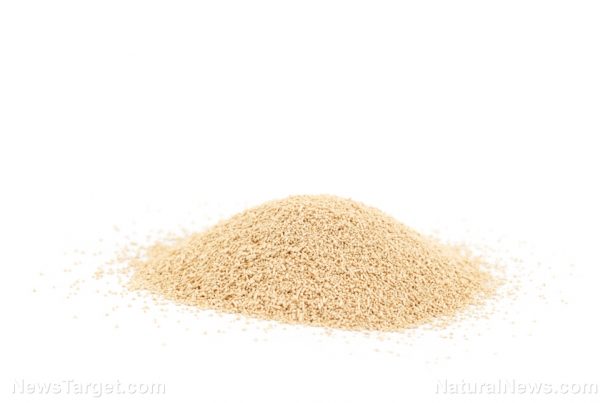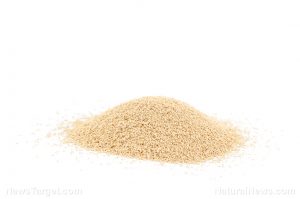
Ferrous lactate sources, health risks
Thursday, October 12, 2017 by Jhoanna Robinson
http://www.naturalpedia.com/ferrous-lactate-sources-health-risks.html

Ferrous lactate is a chemical compound that can be described as a green-like white crystal or a light green powder that emits a light smell. It holds the function of serving as an acidity regulator by balancing the alkalinity of food. An iron supplement, the World Health Organization (WHO) recommends that it should be included in babies’ formula.
Ferrous lactate, or iron (II) lactate has one atom of iron (Fe2+) and two lactate anions. It is known by the chemical formula Fe(C3H503)2 and is used as a food additive with E number E585. Aside from being an acidity regulator, it is also a color retention agent.
Ferrous lactate has been known as a treatment for iron-deficiency anemia, which has been linked with premature delivery and low birth weight. The recommended daily intake for ferrous lactate is up to 0.8 milligram per kilogram bodyweight.
Although the “lactate” in ferrous lactate refers to milk, it is not made from milk and therefore will not cause lactose intolerant persons to suffer from allergic reactions.
Ferrous lactate is soluble in water yet insoluble in ethanol. Adults who suffer from a lack of iron in their body should take iron supplements to replenish their stock of iron, which is widely used in biscuits, candies, dairy products, powdered milk, and soy sauce, among others.
Harmful effects that can be caused by ferrous lactate
When ferrous lactate is swallowed, it causes allergic reactions in people that include but are not limited to gastrointestinal irritation. It also causes skin corrosion when you get exposed to it physically, serious eye damage when it gets near your eyes, and respiratory tract issues when inhaled.
Too much intake of ferrous lactate supplements can cause iron overload in the body, called haemochromatosis, which is characterized by symptoms that include diabetes onset, fatigue, heart failure, joint pain, and sexual dysfunction.
Severe poisoning can make a person experience lethargy, metabolic acidosis (when the body produces too much acid in the body as a result of the kidneys’ inability to flush them out), hemorrhages, seizures, hepatotoxicity or liver damage, shock, and coma.
Ferrous lactate can cause coagulopathy, or the inability of the blood to coagulate, resulting in excessive bleeding or after medical or dental procedures. It can also induce cyanosis, which is characterized by bluish or purplish discoloration of the skin as a result of the skin having low oxygen saturation.
Other blood-related conditions that ferrous lactate cause include hemoconcentration (decrease in plasma volume), decrease in total blood volume, low blood pressure, and central nervous system depression.
Ferrous lactate has cancer-causing elements. Gastric carcinoma has been associated with increased plasma ferritin levels caused by the compound, and pulmonary and renal cancers have been recorded as some of the diseases that iron workers in the metal industry have.
Body systems harmed by ferrous lactate
Ferrous lactate is bad for the digestive system. It can induce eisinophilic gastroenteritis, which is an inflammation of the gastrointestinal tract, chiefly the stomach and duodenum, and sometimes the esophagus and colon. It can also cause abdominal pain, constipation, diarrhea, hematochezia (bleeding through the anus), and vomiting – sometimes of blood – within six hours of too much ingestion.
Ferrous lactate is bad for the excretory system. Ferrous lactate provokes an increase of calcium in the liver, thus making it hard to do its function of getting rid of the toxins in the body. It also causes fibrosis of the pancreas, diabetes mellitus, and liver cirrhosis.
Ferrous lactate is bad for the respiratory system and nervous systems.
Where to learn more
Summary
The recommended daily intake for ferrous lactate is up to 0.8 milligram per kilogram bodyweight.
Ferrous lactate is soluble in water yet insoluble in ethanol.
Ferrous lactate is bad for the digestive, excretory, and digestive systems.
Sources include:
Tagged Under: Tags: ferrous lactate






